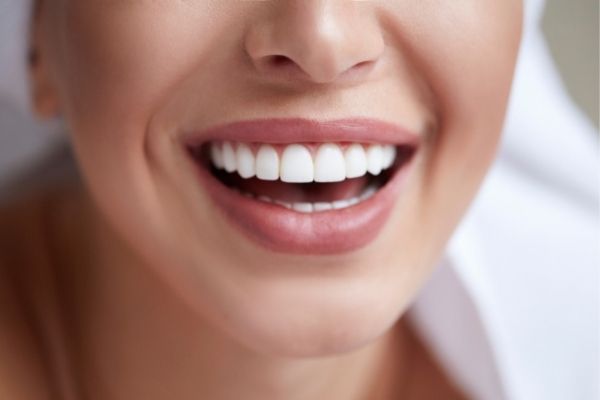Cosmetic Dentistry

Cosmetic Dentistry
Cosmetic dentistry is a term used for a number of different approaches dentists use to help patients reclaim their smiles. Generally speaking, cosmetic dentistry improves the appearance of a person’s teeth, gums, or bite. This can include, but is not limited to:
- Changes in coloration
- Alterations to the shape and size of teeth
- Adjustments to alignment
The goal of dentists who perform cosmetic dentistry is to give their patients the confidence to love their smiles.
What is Considered Cosmetic Dentistry?
Cosmetic dentistry includes any number of procedures that are designed to improve a person’s smile. Most of the time, cosmetic dentistry is elective, meaning the dental insurance may not cover all or most of the cost. However, there are times when a patient’s situation may require cosmetic dentistry. In those cases, your dentist will usually work with your dental insurance provider to ensure as much of the procedure is covered as possible.
The following are some of the most common cosmetic dentistry procedures:
Dental Crowns
A dental crown is a porcelain or ceramic cap that’s placed atop the remnants of the natural tooth, which is shaped into a post that holds the cap in place. Crowns are used when:
- Cavities are too large for fillings
- A tooth is cracked, worn down, or too weak for bonding or fillers to work
- A patient has had a root canal
- A tooth is badly misshapen or discolored beyond repair
If you need a crown, your dentist will take an impression of your teeth, either via a mold or digitally, so she knows the exact size and shape the crown needs to be. Often, the crown specs will be sent to an outside lab where the tooth will be constructed and sent back to the dentist in about a week. During this time, you’ll receive a temporary crown until the final product arrives.
Once the crown is ready, your dentist will remove the temporary crown and replace it with a permanent crown.
Dental Veneer
Veneers are a great option for people who have chipped, misshapen, or discolored teeth, as well as those who have gaps between their teeth.
Dental veneers are thin covers of porcelain or composite resin that adhere to the front of teeth to give them a more classic look. One applied, veneers feel and function just like natural teeth.
If you’re getting veneers, your dentist will prepare your teeth by removing a small amount of enamel from the front and sides of your teeth. This is to ensure the veneer doesn’t obstruct your bite when the porcelain is laid on top of the tooth. From there, your dentist will make an impression of the prepared teeth and send the information to a dental lab where your custom veneers will be created. At your next appointment, your dentist will place the veneers on your teeth and check the shape to ensure a proper fit.
Before you get veneers:
- Your teeth and gums must be healthy. Your dentist will treat any disease or decay before the process begins
- Talk to your dentist about possible risks if you clench your teeth. Although veneers are very strong, they can chip or crack when put under extreme pressure, particularly when they’re exposed to clench teeth night after night. You might consider wearing a mouth guard to help prevent serious damage to your veneers.
- Understand that the process of removing the enamel cannot be undone. Your dentist is only going to remove a little bit of your teeth’s enamel, but it’s important to understand that this process is permanent once it’s been done.
Veneers can be put on just one teeth or many, depending on your unique needs. It’s important to discuss your ultimate goals with your dentist so she can help you plan a strategy that works best, ensuring the color and shape of each veneer are consistent and beautiful.
Dental bonding
Dental bonding is the application of a tooth-colored composite resin that’s applied to teeth that are chipped, cracked, or slightly misshapen. Bonding is the easiest and least expensive option, often used for smaller imperfections when veneers or crowns aren’t necessary.
Bonding can usually be done in a single visit. Your dentist will use a shade guide to create a bonding mixture that most closely resembles the color of your natural teeth. From there, she’ll apply the bonding material directly to your existing teeth, shaping it as she goes to ensure a natural look and feel.
Dental bridges
Dental bridges are one option for patients who are missing a tooth or several teeth. In short, crowns are constructed for the missing teeth, as well as the teeth adjacent to the missing teeth. A piece of metal bridges the gap, holding the crowns in place. The existing teeth have a crown placed over them, acting as anchors, while the space where once there was a missing tooth now has a crown in its place.
As with most other cosmetic dentistry procedures, your dentist will take an impression of your mouth to ensure both the crowns that go over existing teeth, as well as those that will replace the missing teeth, fit correctly in your mouth. You’ll receive a temporary bridge to wear while your permanent bridge is being created. Once it’s ready, you’ll come back for a second appointment, at which time your dentist will cement the crowns into place.
Dental implants
If you’re missing a tooth or several teeth, dental implants are another option. They’re sturdier and more permanent than dental bridges, ensuring you can eat and drink everything you’re used to enjoying without worrying about your teeth coming loose or becoming damaged.
Dental implants are performed via dental surgery, whereby an anchor is screwed into the jawbone. Once that’s in place, a crown is placed atop the screw, serving as a natural-looking tooth component.
Dental implants are the only dental restoration option that preserves the natural bone. Not only that, but the procedure actually helps to stimulate bone growth, which is important in keeping the jaw, gums, and teeth healthy. Dental implants are quite common today and can be implanted into patients of most ages, given proper gum health and other qualifications are met prior to the surgery. Talk to your dentist if you’re interested in getting dental implants.
Teeth whitening
Stains and discoloration can happen over time. People who smoke, drink dark, acidic beverages such as coffee and wine, and other factors can contribute to the yellowing or browning of tooth enamel, but it can also just happen with age.
Teeth whitening is a process whereby the color of the teeth is lightened, removing stains that cause discoloration. A gel-like substance is applied to the tooth’s surface. Your dentist may use a specialized light or laser to activate the gel and encourage hydrogen peroxide to take effect.
Whitening needs to be redone every so often. Many patients enjoy re-whitening their teeth every six to twelve months to ensure they stay as bright and white as possible.
At Centre Dentaire, we’re proud to serve the Lachine and LaSalle areas with outstanding cosmetic dentistry. We invite you to schedule an initial appointment with our team today!


Contact informations
- 1010 Shevchenko Blvd LaSalle, H8N 1N6
- [email protected]
- 514-367-0300
Take an appointment
Please complete this form and someone from our team will contact you as soon as possible
Welcome
to all new patients!
You care about your Oral care? We do too! Come and meet our team and you will be charmed!

